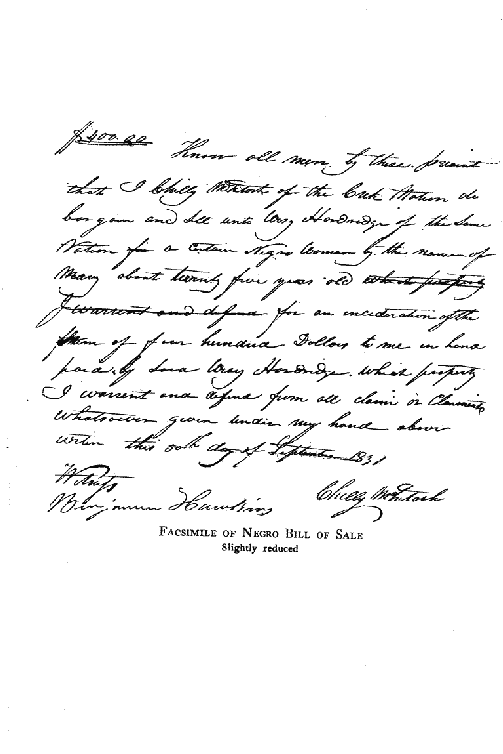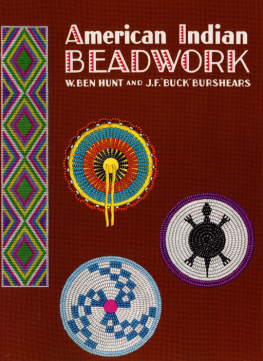Annie Heloise Abel - The American Indian as Participant in the Civil War
Here you can read online Annie Heloise Abel - The American Indian as Participant in the Civil War full text of the book (entire story) in english for free. Download pdf and epub, get meaning, cover and reviews about this ebook. year: 1919, genre: Romance novel. Description of the work, (preface) as well as reviews are available. Best literature library LitArk.com created for fans of good reading and offers a wide selection of genres:
Romance novel
Science fiction
Adventure
Detective
Science
History
Home and family
Prose
Art
Politics
Computer
Non-fiction
Religion
Business
Children
Humor
Choose a favorite category and find really read worthwhile books. Enjoy immersion in the world of imagination, feel the emotions of the characters or learn something new for yourself, make an fascinating discovery.
- Book:The American Indian as Participant in the Civil War
- Author:
- Genre:
- Year:1919
- Rating:4 / 5
- Favourites:Add to favourites
- Your mark:
- 80
- 1
- 2
- 3
- 4
- 5
The American Indian as Participant in the Civil War: summary, description and annotation
We offer to read an annotation, description, summary or preface (depends on what the author of the book "The American Indian as Participant in the Civil War" wrote himself). If you haven't found the necessary information about the book — write in the comments, we will try to find it.
The American Indian as Participant in the Civil War — read online for free the complete book (whole text) full work
Below is the text of the book, divided by pages. System saving the place of the last page read, allows you to conveniently read the book "The American Indian as Participant in the Civil War" online for free, without having to search again every time where you left off. Put a bookmark, and you can go to the page where you finished reading at any time.
Font size:
Interval:
Bookmark:
The Project Gutenberg EBook of The American Indian as Participant in the
Civil War, by Annie Heloise Abel
This eBook is for the use of anyone anywhere at no cost and with
almost no restrictions whatsoever. You may copy it, give it away or
re-use it under the terms of the Project Gutenberg License included
with this eBook or online at www.gutenberg.net
Title: The American Indian as Participant in the Civil War
Author: Annie Heloise Abel
Release Date: June 6, 2004 [EBook #12541]
Language: English
*** START OF THIS PROJECT GUTENBERG EBOOK AMERICAN INDIAN ***
Produced by Suzanne Shell, Leonard Johnson, and the Distributed
Proofreading Team

My former colleagues and students at Goucher
College and in the College Courses for
Teachers, Johns Hopkins University
this book is affectionately dedicated
| I | THE BATTLE OF PEA RIDGE, OR ELKHORN AND ITS MORE IMMEDIATE EFFECTS |
| II | LANE'S BRIGADE AND THE INCEPTION OF THE INDIAN |
| III | THE INDIAN REFUGEES IN SOUTHERN KANSAS |
| IV | THE ORGANIZATION OF THE FIRST INDIAN EXPEDITION |
| V | THE MARCH TO TAHLEQUAH AND THE RETROGRADE MOVEMENT OF THE "WHITE AUXILIARY" |
| VI | GENERAL PIKE IN CONTROVERSY WITH GENERAL HINDMAN |
| VII | ORGANIZATION OF THE ARKANSAS AND RED RIVER SUPERINTENDENCY |
| VIII | THE RETIREMENT OF GENERAL PIKE |
| IX | THE REMOVAL OF THE REFUGEES TO THE SAC AND FOX AGENCY |
| X | NEGOTIATIONS WITH UNION INDIANS |
| XI | INDIAN TERRITORY IN 1863, JANUARY TO JUNE INCLUSIVE |
| XII | INDIAN TERRITORY IN 1863, JULY TO DECEMBER INCLUSIVE |
| XIII | ASPECTS, CHIEFLY MILITARY, 1864-1865 |
| APPENDIX | |
| SELECTED BIBLIOGRAPHY | |
| INDEX |
| FACSIMILE OF NEGRO BILL OF SALE |
| SKETCH MAP SHOWING THE MAIN THEATRE OF BORDER WARFARE AND THE LOCATION OF TRIBES WITHIN THE INDIAN COUNTRY |
| PORTRAIT OF COLONEL W.A. PHILLIPS |
| FACSIMILE OF MONTHLY INSPECTION REPORT OF THE SECOND CREEK REGIMENT OF MOUNTED VOLUNTEERS |
| FACSIMILE OF MONTHLY INSPECTION REPORT OF THE FIRST CREEK REGIMENT OF MOUNTED VOLUNTEERS |
The Indian alliance, so assiduously sought by the Southern Confederacy and so laboriously built up, soon revealed itself to be most unstable. Direct and unmistakable signs of its instability appeared in connection with the first real military test to which it was subjected, the Battle of Pea Ridge or Elkhorn, as it is better known in the South, the battle that stands out in the history of the War of Secession as being the most decisive victory to date of the Union forces in the West and as marking the turning point in the political relationship of the State of Missouri with the Confederate government.
In the short time during which, following the removal of General Frmont, General David Hunter was in full command of the Department of the Westand it was practically not more than one weekhe completely reversed the policy of vigorous offensive that had obtained under men, subordinate to his predecessor.1 In southwest Missouri, he abandoned the advanced position of the Federals and fell back upon Sedalia and Rolla, railway termini. That he did this at the suggestion of President Lincoln2 and with the tacit approval of General McClellan3 makes no
The Century Company's War Book, vol. i, 314-315.
Official Records, first ser., vol. iii, 553-554. Hereafter, except where otherwise designated, the first series will always be understood.
Ibid., 568.
difference now, as it made no difference then, in the consideration of the consequences; yet the consequences were, none the less, rather serious. They were such, in fact, as to increase very greatly the confusion on the border and to give the Confederates that chance of recovery which soon made it necessary for their foes to do the work of Nathaniel Lyon all over again.
It has been most truthfully said4 that never, throughout the period of the entire war, did the southern government fully realize the surpassingly great importance of its Trans-Mississippi District; notwithstanding that when that district was originally organized,5 in January, 1862, some faint idea of what it might, peradventure, accomplish did seem to penetrate,6 although ever so vaguely, the minds of those then in authority. It was organized under pressure from the West as was natural, and under circumstances to which meagre and tentative reference has already been made in the first volume of this work.7 In the main, the circumstances were such as developed out of the persistent refusal of General McCulloch to coperate with General Price.
There was much to be said in justification of McCulloch's obstinacy. To understand this it is well to recall that, under the plan, lying back of this first
Official Records, vol. liii, supplement, 781-782; Edwards, Shelby and His Men, 105.
Ibid., vol. viii, 734.
It is doubtful if even this ought to be conceded in view of the fact that President Davis later admitted that Van Dorn entered upon the Pea Ridge campaign for the sole purpose of effecting "a diversion in behalf of General Johnston" [Rise and Fall of the Confederate Government, vol. ii, 51]. Moreover, Van Dorn had scarcely been assigned to the command of the Trans-Mississippi District before Beauregard was devising plans for bringing him east again [Greene, The Mississippi, II; Roman, Military Operations of General Beauregard, vol. i, 240-244].
Abel, American Indian as Slaveholder and Secessionist, 225-226 and footnote 522.
appointment to the Confederate command, was the expectation that he would secure the Indian Territory. Obviously, the best way to do that was to occupy it, provided the tribes, whose domicile it was, were willing. But, if the Cherokees can be taken to have voiced the opinion of all, they were not willing, notwithstanding that a sensationally reported8 Federal activity under Colonel James Montgomery,9 in the neighborhood of the frontier posts, Cobb, Arbuckle, and Washita, was designed to alarm them and had notably influenced, if it had not actually inspired, the selection and appointment of the Texan ranger.10
Unable, by reason of the Cherokee objection thereto, to enter the Indian country; because entrance in the face of that objection would inevitably force the Ross faction of the Cherokees and, possibly also, Indians of other tribes into the arms of the Union, McCulloch intrenched himself on its northeast border, in Arkansas, and there awaited a more favorable opportunity for accomplishing his main purpose. He seems to have desired the Confederate government to add the contiguous portion of Arkansas to his command, but in that he was disappointed.11 Nevertheless, Arkansas early interpreted his presence in the state to imply that he was there primarily for her defence and, by the middle of June, that idea had so far gained general acceptance that C.C. Danley, speaking for the Arkansas Military Board, urged President Davis "to meet
Font size:
Interval:
Bookmark:
Similar books «The American Indian as Participant in the Civil War»
Look at similar books to The American Indian as Participant in the Civil War. We have selected literature similar in name and meaning in the hope of providing readers with more options to find new, interesting, not yet read works.
Discussion, reviews of the book The American Indian as Participant in the Civil War and just readers' own opinions. Leave your comments, write what you think about the work, its meaning or the main characters. Specify what exactly you liked and what you didn't like, and why you think so.









